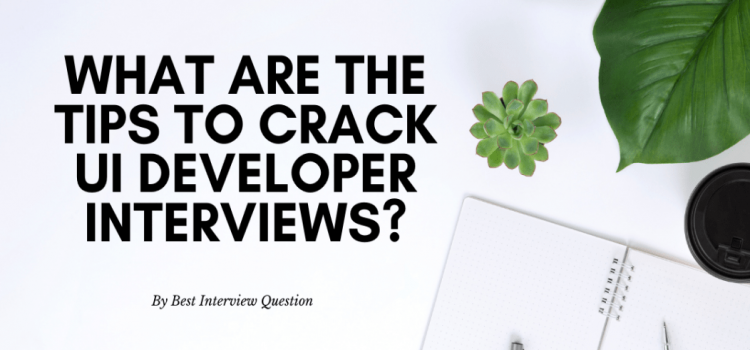What are the tips to crack UI Developer interviews?

Going for a job change or finally stepping out into the real world after completing your studies can be daunting, especially during COVID-19 and social distancing. A little preparation before diving into the actual process goes a long way, more than you can anticipate.
Preparing for an interview as a UI developer can be hard. There are no “standard” processes, and this is due to one big reason. What’s relevant last year might/will not be relevant today. To further complicate this process, each organization has its way of interviewing potential employees, having their own desired skill set, and different job descriptions for the incoming developer.
Getting An Interview
Many job postings are meant to scare many applicants but could be very tempting. If you think that you have the relevant skills and expertise, why not apply?
Once you have found a potential job opening that appeals to you, it’s time to sit and do your research. Carefully read the job opening; read it again and again and again. The most crucial thing to do is address what they are looking for. After reading, you need to submit exactly what is expected of you; if you cannot, then do your best and show why this job is tailor-made for you.
Some tips for setting you aside during a UI Developer Interview
Preparing for a UI Developer can be a bit tricky due to constant changes in the programming languages, but there are some primary languages that candidates are required to have a command over.
- HTML: One of the oldest languages, you should focus on the latest version of HTML, i.e., HTML 5, its new changes, features, and how they affect UI Development. You should also read some common HTML Interview Questions.
- JavaScript: One of the most popular languages, JS, is commonly used by many UI Development companies to develop effective designs. You should gain knowledge about the basic JS commands like Hoisting, Splice, Push, and Pop to understand the effect of generating a UI.
- CSS: More specifically, you should be reading about CSS 3, the latest version of this language, and how it is optimized to make better changes to the User Interface. It is recommended that you read some frequently asked CSS Interview Questions to gain insights.
PREPARATION FOR THE INTERVIEW
So, now that you have landed an interview, the second phase is to get ready for it to get yourself on the top-choices of applicants. Try to put all of your efforts; this is your one chance to impress your next possible employer!
Preparing for this can help you understand what to expect and make you a lot more confident and relaxed while answering the interview questions.
1. DO YOUR RESEARCH
Always research about the company, what they are into, their work culture, current and previous projects, vision, mission, and their average pay package for your job position. Also, please get to know about their competitors, it can be a handy tip for you, as you have something relevant to speak about during the interview, making you sound more interested and focused.
2. PRACTICE SOME INTERVIEW QUESTIONS
Get comfy by answering questions in front of the mirror, understand that no two issues will be the same, so, as a UI Developer, it is good to practice some of your essential skill set to make you very confident about the interview.
3. PREVIOUSLY ASKED QUESTIONS
Finally, just like many examinations where you prepare by reading the previous year’s questions, you can read about common UI Development Interview Questions from various sources on the internet. Here is the list of the most common questions are:
Most Popular UI Developer Interview Questions
- What do you mean by Semantic HTML?
- How does absolute, relative, static, and fixed positions differ from each other?
- What do you mean by a well responsive website?
- What is the definition of In-Line, Block, and In-Line Block?
- What's the difference between a window and a document?
